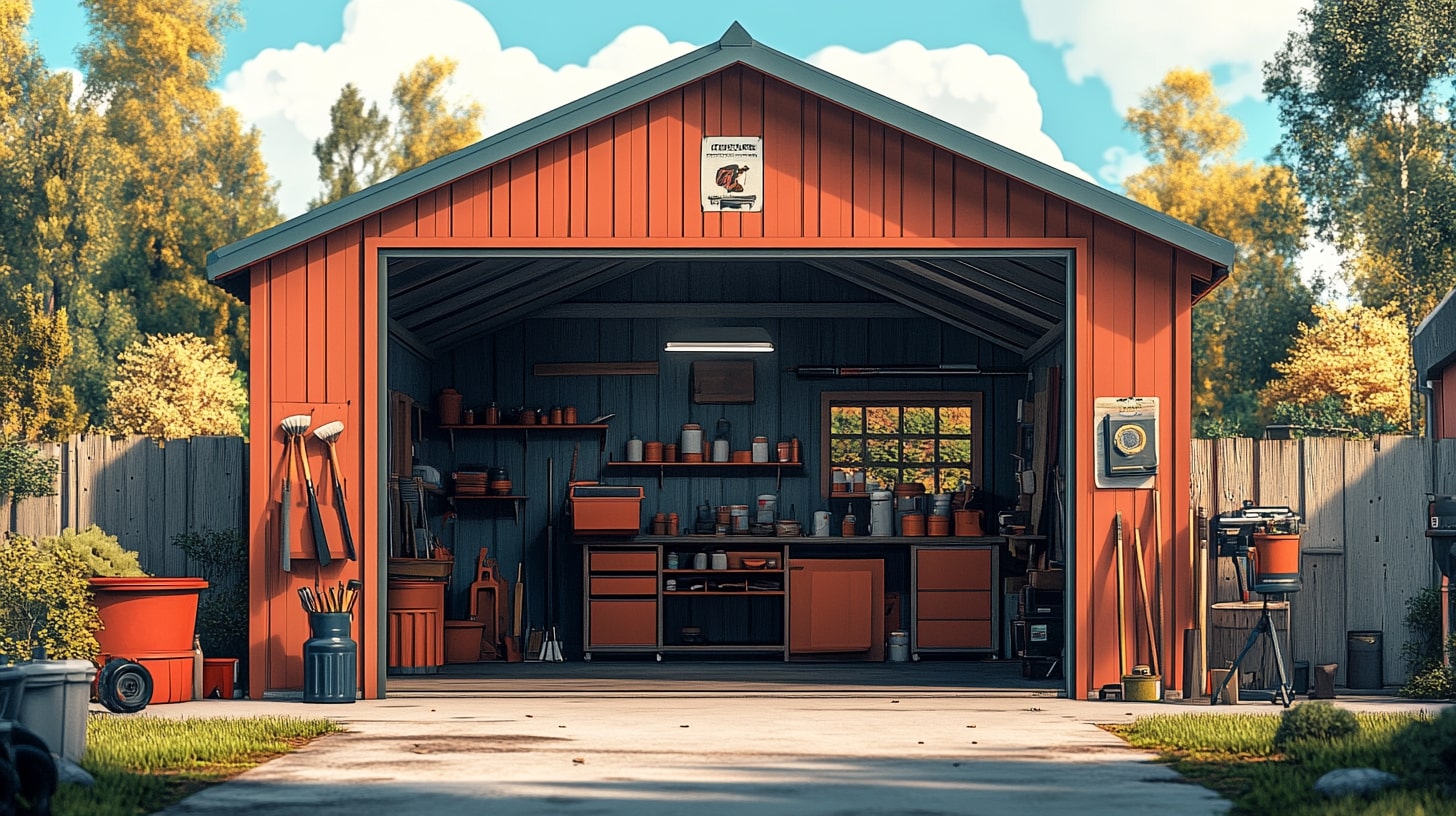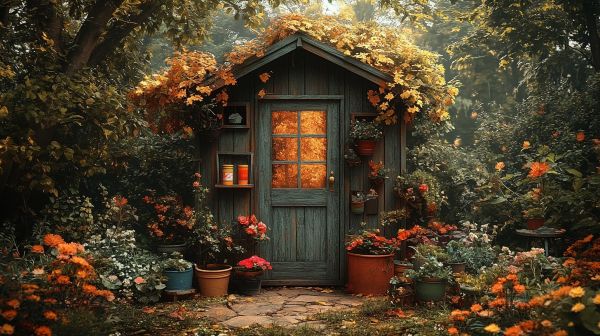
Shed protection: Painting or staining, which is the best choice?
Imagine for a moment: the sun is shining, birds are singing, and you're admiring your backyard. Your eyes land on your shed, that oh-so-useful storage space, but… it’s looking a little tired.
The paint is peeling, the wood is turning gray, and you’re wondering if it’s time to give it a makeover. You’re not alone!
Every year, thousands of homeowners ask themselves the same question: how can they best protect their shed from Quebec’s harsh weather conditions?
Faced with the options available, a crucial choice arises: paint or stain? Both promise beauty and protection, but which one is best suited to your needs and your shed?
It’s a bit like choosing between a comforting drip coffee and a strong espresso: both are coffee, but the experience is completely different.
In this article, we’ll explore the advantages and disadvantages of paint vs. stain for sheds.
We’ll break down their differences, their performance against our province’s climate challenges, and their maintenance requirements.
The goal? To give you all the information you need to make an informed decision and provide your shed with the protection it deserves for many years to come.
Because a well-protected shed lasts longer, retains its beauty, and saves you a lot of trouble and long-term expenses.
So, ready to dive into the fascinating world of shed coatings? Follow the guide—we’ve got you covered! 😉
Why limit yourself to just paint or stain for shed protection?
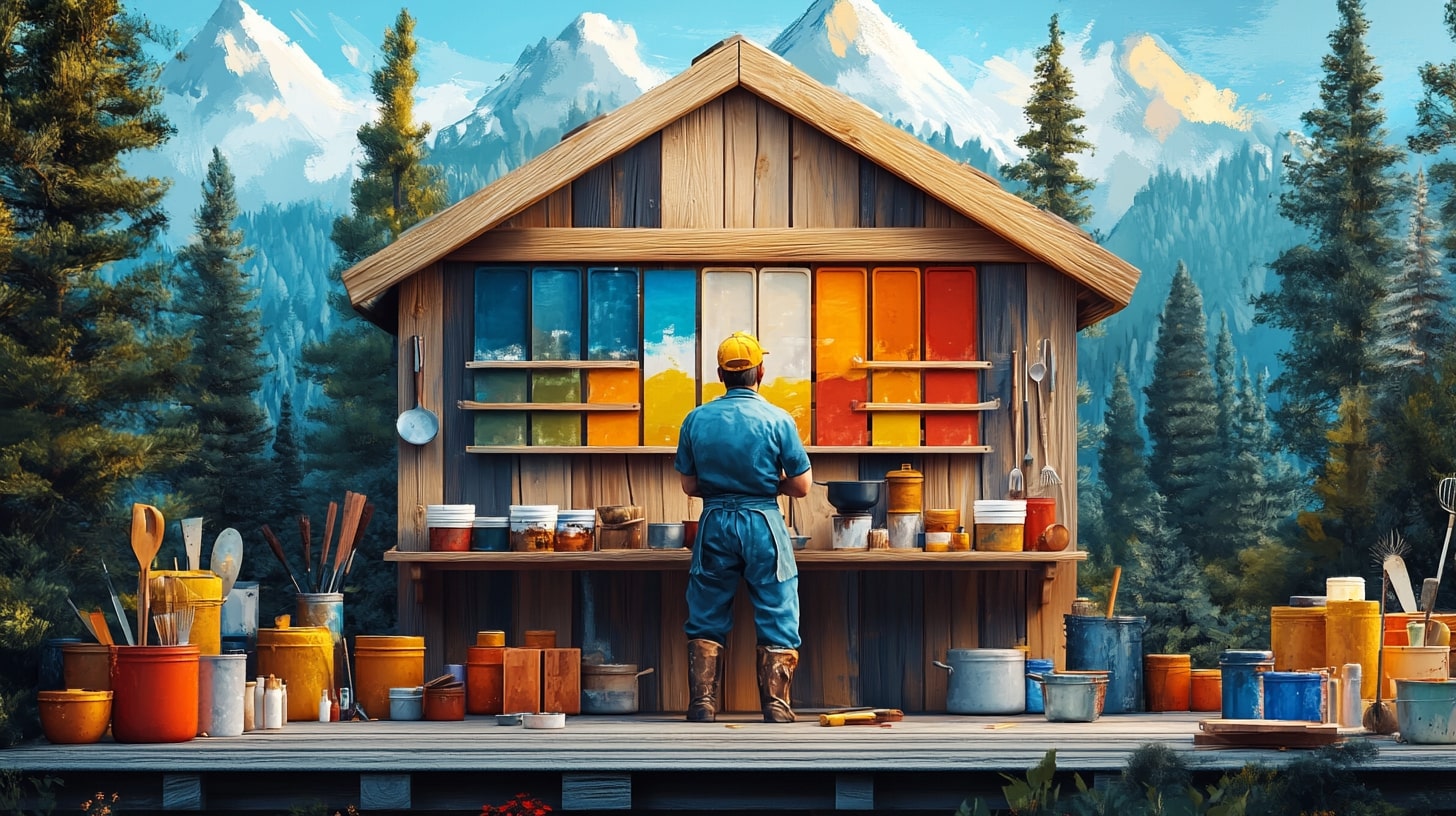
You might think the “paint or stain” question is the only one to consider when protecting your shed. This is a common mistake—and exactly the limiting belief we’re going to debunk together.
In reality, reducing shed protection to a simple either-or choice overlooks a much broader and more effective approach.
Imagine a chef who only swears by salt or pepper to season every dish. Sure, they’re essential ingredients, but they’re not enough to create a symphony of flavors.
Similarly, paint and stain are just two tools among many strategies for ensuring your shed’s longevity.
The real question isn’t just choosing one or the other—it’s about understanding how to combine them wisely with other elements for optimal protection.
Think about wood preparation, waterproofing treatments, ventilation, regular inspections, and preventive maintenance.
All these factors play a crucial role—often more important than simply picking the final coating.
According to a Quebec construction industry study, nearly 80% of shed deterioration problems are due to poor maintenance and improper initial preparation, rather than the quality of the paint or stain used.
This statistic is revealing—it highlights the importance of a comprehensive protection approach, far beyond just choosing a so-called “miracle” product.
So before rushing out to buy cans of paint or stain, take a step back. Think of your shed as a complex system where every element interacts with the others.
Effective protection is, above all, a thoughtful and complete strategy, where paint and stain are simply tools serving a bigger goal: the long-term durability and beauty of your shed.
Paint: The Colored Armor for Your Shed—But at What Cost?
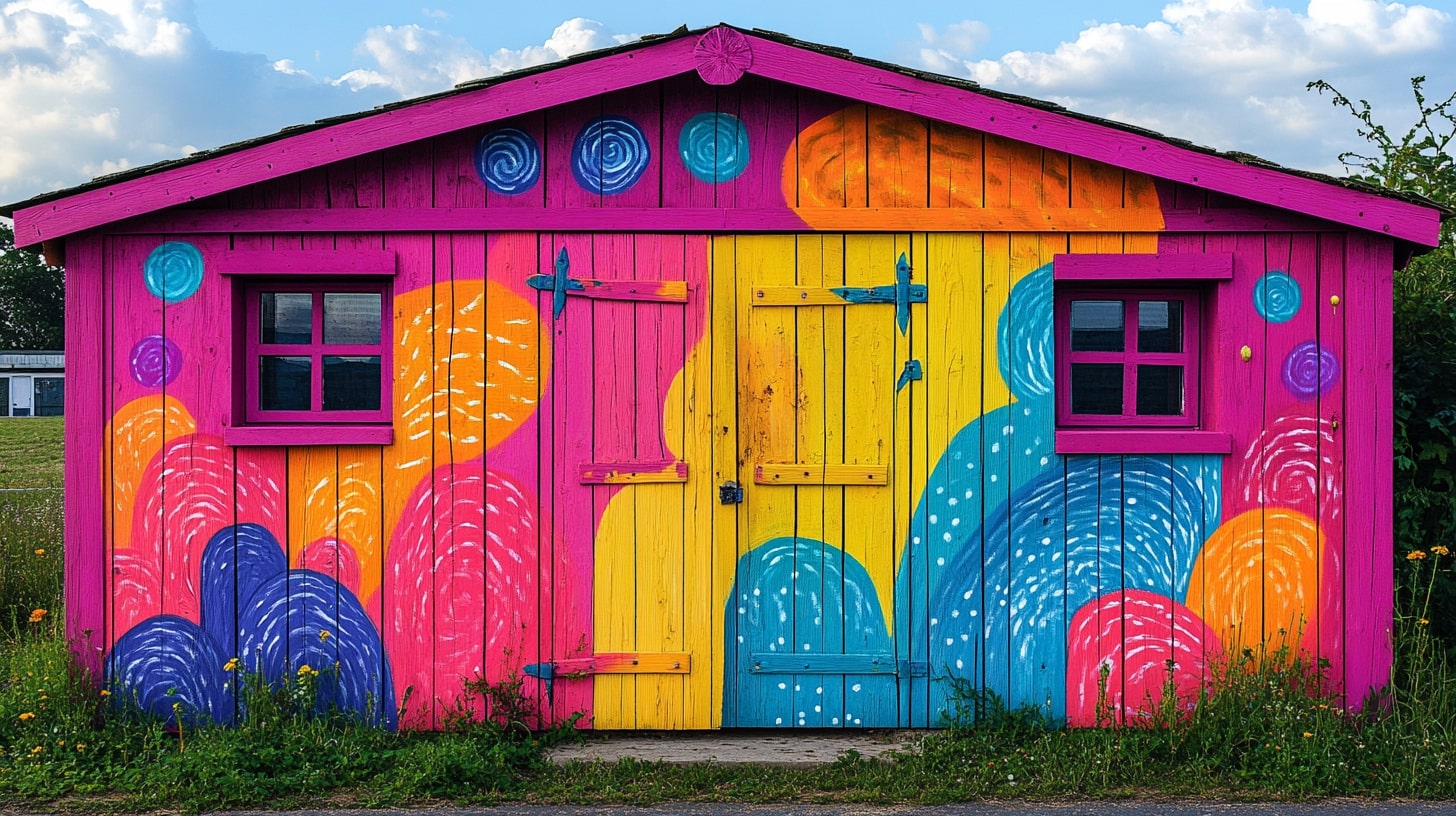
Paint is like a suit of armor for your shed. It provides a robust shield against external aggressions, forming an opaque, colored film on the wood’s surface, protecting it from UV rays, rain, snow, and temperature fluctuations.
It’s a popular choice for a reason—paint offers many aesthetic and practical advantages.
Pros of Paint:
✅ Maximum UV Protection:
Thanks to its opacity, paint effectively blocks ultraviolet rays, which cause wood discoloration and premature aging. This is a major asset in Quebec’s intense sun exposure during summer and spring.
✅ Wide Range of Colors and Finishes:
With paint, the possibilities are endless! You can choose from an unlimited color palette, from matte to glossy finishes, and design a shed that perfectly matches your outdoor space.
✅ Opaque & Uniform Look:
Paint hides wood imperfections (knots, color variations) and creates a smooth, flawless appearance. If you want a modern, polished shed, paint is an excellent option.
✅ Longer Durability (with Proper Preparation):
When applied correctly with proper wood preparation, paint can provide long-lasting protection, up to 7–10 years or more, depending on the paint quality and climate conditions.
Cons of Paint:
❌ Limited Wood Breathability:
Paint forms an opaque layer that prevents the wood from breathing properly. Moisture can build up underneath, leading to mold growth and paint peeling over time.
❌ More Maintenance Required:
When paint starts chipping or cracking, you must sand, repair, and repaint the entire shed to maintain its protection and appearance. This is more labor-intensive than staining.
❌ Less Natural Appearance:
Paint completely covers the natural wood grain and texture. If you prefer a warm, authentic look, stain might be a better choice.
❌ Cracking & Peeling Over Time:
With age and weather changes, paint can become rigid and crack, especially if the wood was not properly prepped or low-quality paint was used. These cracks allow moisture to seep in, potentially damaging the wood.
Summary:
Paint is a great option if you prioritize:
✔ Maximum UV protection
✔ A wide range of colors
✔ A smooth, opaque finish
✔ Long-term durability (with proper maintenance)
However, poorly applied or neglected paint can cause long-term issues.
Stain: The Transparent Protection That Enhances Wood—But Is It Enough?
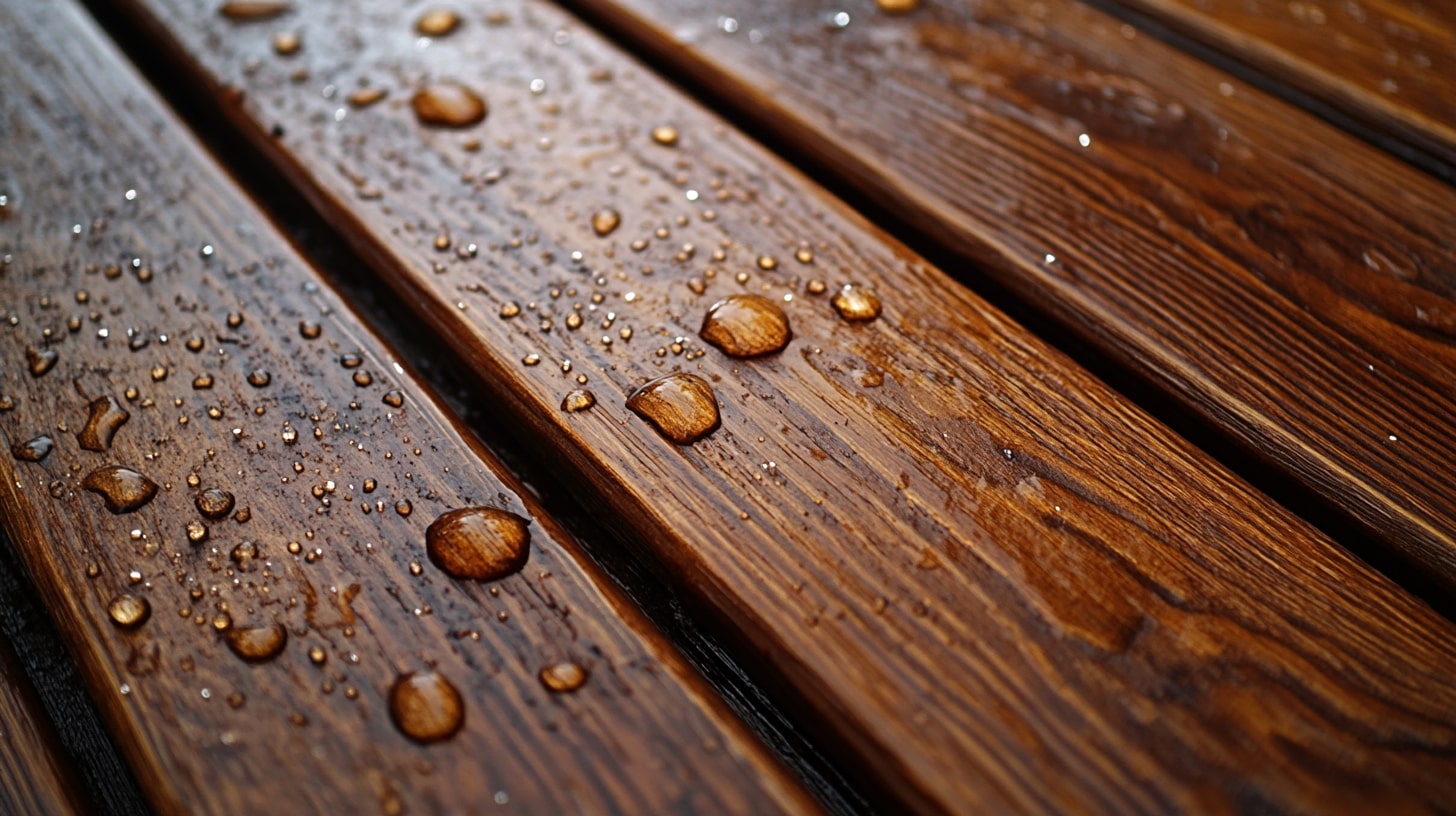
Stain offers a gentler approach that respects the natural wood. Unlike paint, which forms an opaque film, stain penetrates the wood fibers, nourishing and protecting it from the inside.
It preserves the wood’s natural texture and grain, highlighting its warm, raw beauty.
Pros of Stain:
✅ Waterproof & Fungicide Protection:
Stain repels water and prevents mold and fungus growth, major threats to wooden structures in Quebec’s climate.
✅ Allows the Wood to Breathe:
Unlike paint, stain doesn’t form a waterproof layer—it lets the wood naturally regulate its moisture, reducing risks of cracking, warping, and rotting.
✅ Natural, Warm Appearance:
Stain enhances the wood’s grain instead of covering it up. Available in transparent or semi-transparent tones, it highlights the wood’s natural beauty.
✅ Easier, Less Expensive Maintenance:
Unlike paint, stain doesn’t require sanding or stripping before reapplication—just a simple cleaning and new coat.
Cons of Stain:
❌ Less Effective UV Protection:
Transparent or semi-transparent stains offer weaker UV protection than opaque paint, making wood more prone to fading over time.
❌ Limited Color Options:
Stains are mostly available in natural wood tones (brown, honey, gray), so if you want bold colors, paint is the better option.
❌ More Delicate Application:
Stain must be applied in thin, even layers, following the wood grain. Excess stain must be wiped off to avoid drips and streaks.
❌ Shorter Lifespan Than Paint:
Most stains last 3–5 years before needing a new coat, compared to 6–10 years for quality exterior paint.
Verdict: How to Make the Best Choice for YOUR Shed?
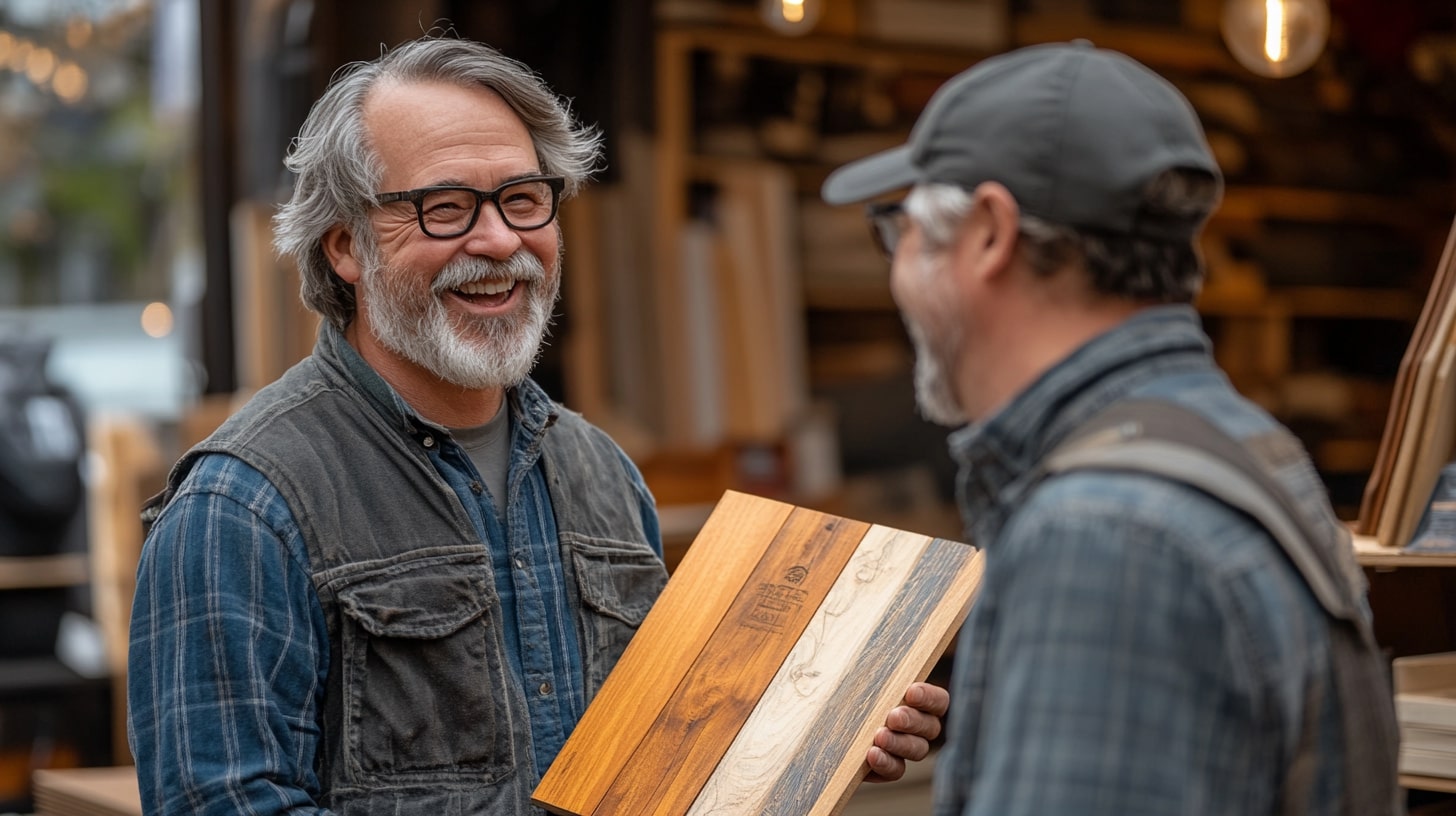
After weighing the pros and cons of paint vs. stain, the best option depends on your priorities.
- If you want long-term UV protection & a polished look → Choose Paint
- If you prefer a natural, breathable, low-maintenance finish → Choose Stain
No matter your choice, proper preparation and maintenance are the real keys to a durable, beautiful shed! 🚀
For expert guidance, check out Cabanons Boyer: https://cabanonsboyer.com/ 🔗
